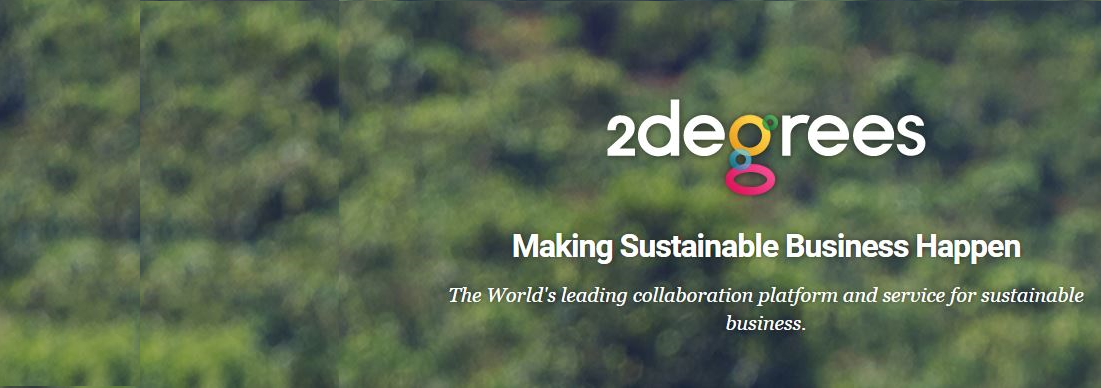
While official policy-makers and intergovernmental bodies struggle to establish the agreements and frameworks that could, in a few bold strokes, free us from our carbon dependency, a revolution by 10,000 cuts is already taking effect in the private sector.
It is happening in the supply-chains of some of the world's largest corporations. Companies that in the past regarded sustainability and the green agenda as anti-business are beginning to embrace these concepts as a necessity for survival and an opportunity to build competitive advantage.
According to calculations by the CDP, the scope 1 and 2 emissions of G500 companies equates to roughly 10% of global emissions. For most companies, scope 3 emissions, including their supply-chains, are far bigger still. So maximising efficiencies across these supply-chains, re-engineering them as closed energy and resource loops, would make a huge difference. Fortunately, this is already happening, not by implementing a few big, silver bullet reforms, but by making thousands of small changes.
Adapted social media technology is enabling what we at 2degrees call "fully-linked collaboration". This is where anybody in a company with a problem or challenge can quickly and easily find someone else from another company with relevant experience, or even the very solution that they need.
This new, super-connectivity allows best practices to be identified, shared and disseminated very rapidly. In food manufacturing, in Europe alone, it is estimated that €22.5bn could be savedin this way by implementing best practices in energy management across the supply chain. (See 'Joining Forces – the case for collaboration').
However, this is not easy. It requires large-scale sharing of experience, know-how and insights, often between competitors. It requires an online platform, facilitation and processes to enable fully-linked collaboration.
Here are eight non-technology lessons we have learnt from doing this with our clients (including Asda-Walmart, Bord Bia, GlaxoSmithKline, Kingfisher, Royal Bank of Scotland, Tesco) that we believe are critical to making fully-linked collaboration work within a supply chain. They are written from the perspective of the business customer at the top of the value chain.
1. Fully-linked collaboration programmes need to be built from the perspective of maximising value for your suppliers. Get that right, and communicate it effectively, and you will drive engagement by the suppliers. Focus primarily on your needs and you make it hard for yourself. Ever wondered why asking for data from suppliers is so difficult?
2. The most important stakeholders to get involved are the operational managers (those practical folks with responsibility for energy, factory sites, production lines, packaging, waste, etc.). These are generally the out-of-sight individuals with the responsibility, challenges and collective know-how to unlock the hidden savings and reduce impacts. Make your programmes solve their problems and unlock their wisdom.
3. To be really effective, programmes have to be focused on a common measurable objective that all suppliers can get behind. This is where you, the customer, must lead. As an example, in our work with Asda-Walmart's Sustain and Save Exchange, the focus is on making its food supply chain the best-invested, most resilient and sustainable one out there with a clear target of $1bn cost reduction.
4. Benchmarking peers and competitors, as a group, is a very powerful way to get skeptics engaged. Suppliers tend to pay attention and join in if you can show them they are less energy efficient than their direct competitors and promise to share the best practices they are missing.
5. To be in a position where companies are prepared to share their best practices with competitors you need to have commercial teams leading (not CSR), providing a compelling incentive for suppliers to share. The incentive could be a reward in the form of: better terms, longer contracts, more time spent on joint promotions, etc.
6. Only so much happens without active facilitation. This is best done by a third party (we would say that, but see below). You need someone who understands the suppliers as companies and individuals, is trusted and can constantly connect the dots, link people up and encourage participation.
7. Use collaborative purchasing to solve common problems within the supply-chain and take advantage of the potential scale to drive down the cost of solutions. This also creates an important focal point of action for all the knowledge-sharing. As an example, Tesco's Buying Club saves its suppliers on average 25% off the cost of installing LED lights retrofitted into distribution centers. (LED lights cut the cost of electricity and carbon for lighting about 60%.)
8. The big breakthroughs (like Tesco's Buying Club, above) won't happen openly in front of the customer. Suppliers are too nervous that any savings they might make will be stripped away in negotiation if their customers know about them.
This is a further reason why you need third-party, trusted facilitation, that can enable, what some call, blind collaboration where data is collected anonymously so that suppliers feel they can keep most, if not all, of the savings they make.
When all eight of these principles are applied, fully-linked collaboration takes place and something remarkable happens: Firstly, engagement and collaboration levels amongst suppliers soar, with often more than 70% of the key operational management participating, at least once a month. Secondly, suppliers make investments in energy, waste and water reduction initiatives that they would not otherwise make.
In fact, we now have evidence that for every $1 the customer invests in managing fully-linked collaboration programmes, suppliers can invest up to $20, and make savings of $40 (over five years).
If we do this on a large scale, we will soon be removing billions of dollars in costs and related impacts from our supply chains. These cost reductions, as well as the energy and resource efficiencies put in place, will go at least part of the way to make up for the lack of attention to environmental care-taking from our public policy-makers.
Article was originally posted on the Guardian



